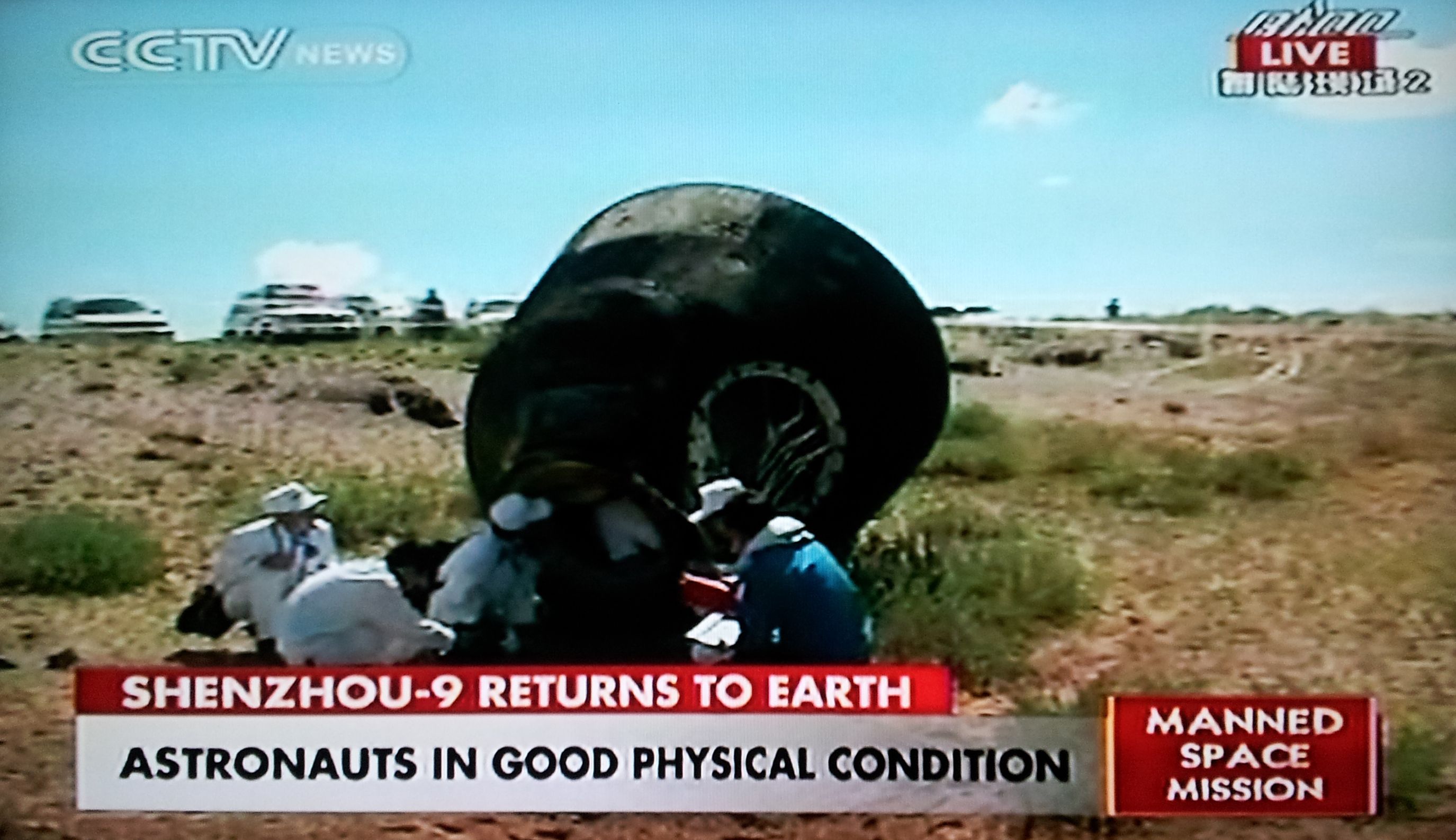
China's historic Shenzhou 9 mission may be over, but the nation's space program won't stay grounded for long.
The Shenzhou 9 spacecraft and its three crewmembers returned to Earth Thursday at about 10 p.m. EDT (10 a.m. Friday Beijing time), wrapping up a mission that launched China's first female astronaut and featured its first-ever manned space docking.
China won't rest on its laurels for long, however. The nation plans to continue its steady march into space, beginning with another manned launch in just a few months' time.
Working toward a space station
Shenzhou 9's chief goal was to test out technologies and techniques needed to build a space station in Earth orbit. Chinese officials have said they hope to have a 60-ton station up and running by 2020. (For comparison, the International Space Station weighs 430 tons.) [Photos: Building the International Space Station]
By any measure, Shenzhou 9 — the nation's fourth human spaceflight mission, after efforts in 2003, 2005 and 2008 — appears to have been a big success. The spacecraft docked with the unmanned Tiangong 1 space module by remote control on June 18, and then again on June 24 while being piloted by the taikonauts (as Chinese astronauts are called).
China thus became just the third nation — after the United States and Russia — to achieve a manned linkup of spacecraft in Earth orbit.
Get the world’s most fascinating discoveries delivered straight to your inbox.
"The manual docking was beautifully conducted. It was very accurate and swift, " said Liu Weibo, the official responsible for China's astronaut system, according to the nation's state-run Xinhua news service.
And more manned docking tests are on the horizon. The Shenzhou 10 mission will launch more taikonauts to Tiangong 1 soon, perhaps in early 2013; Chinese space officials have said they'll firm up a date after fully examining the results of Shenzhou 9's flight and the status of Tiangong 1.
China won't confine its human spaceflight activities to low-Earth orbit. The nation has said it plans to land a taikonaut on the moon in the near future, likely after its space station is up and running.
Tiangong 1 was launched in September 2011. In November, the robotic Shenzhou 8 spacecraft hooked up with the orbiting module, setting the stage for Shenzhou 9's manned attempt.
Unmanned efforts, too
China is also ramping up its unmanned space activities and capabilities. It wants to return lunar samples to Earth with a robotic spacecraft by 2016, for example.
And in December, China joined the United States and Russia as the only countries with operational homegrown satellite navigation systems. China's Beidou network is somewhat rudimentary at the moment, providing incomplete coverage with just a dozen or so satellites.
However, China envisions a global system with more than 30 satellites by the end of the decade. Beidou's emergence would make China far less dependent on the GPS constellation, which is run by the United States military and is currently the world's dominant satellite navigation network.
This story was provided by SPACE.com, a sister site to LiveScience. Follow SPACE.com senior writer Mike Wall on Twitter @michaeldwall or SPACE.com @Spacedotcom. We're also on Facebook and Google+.


